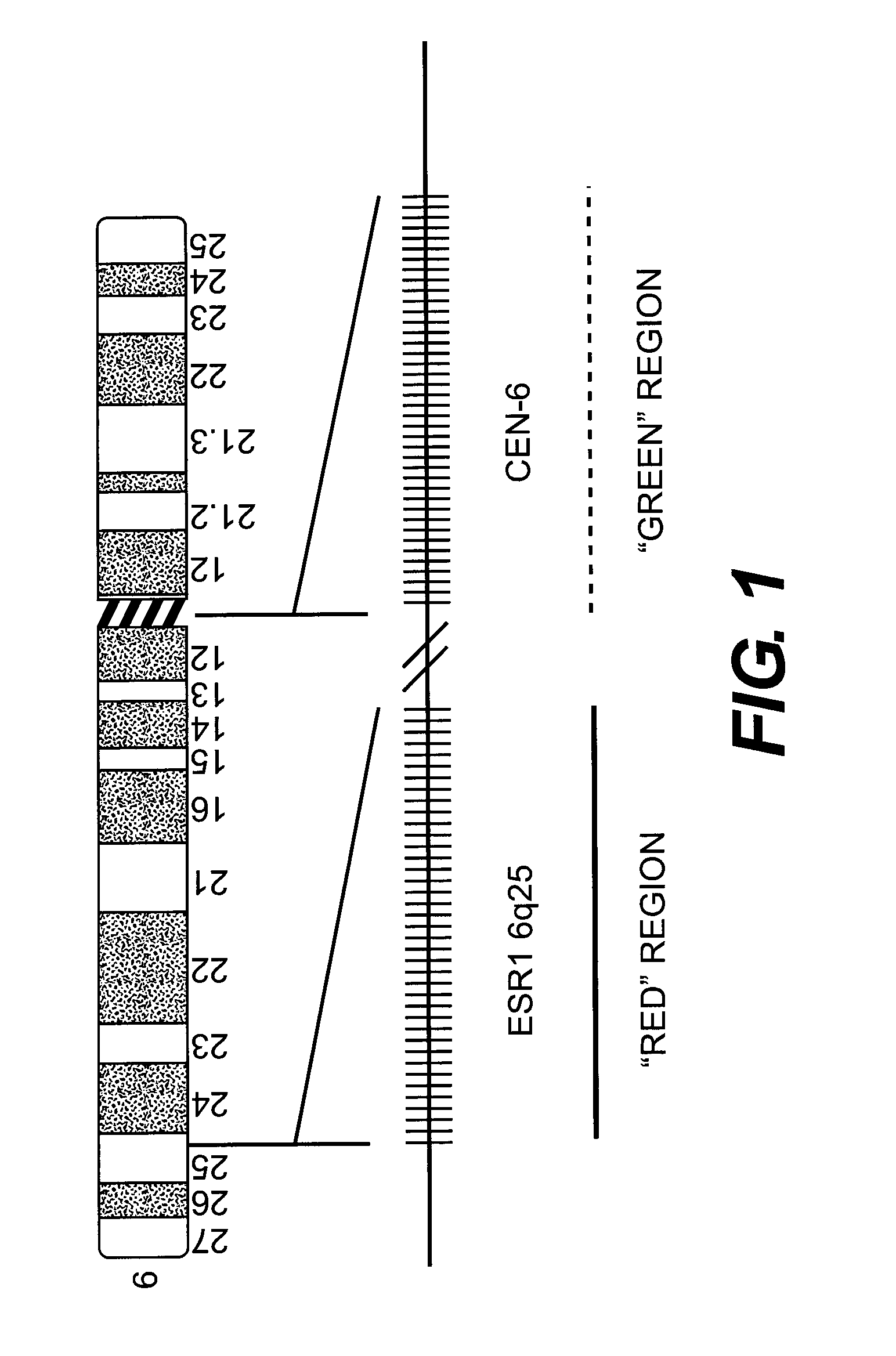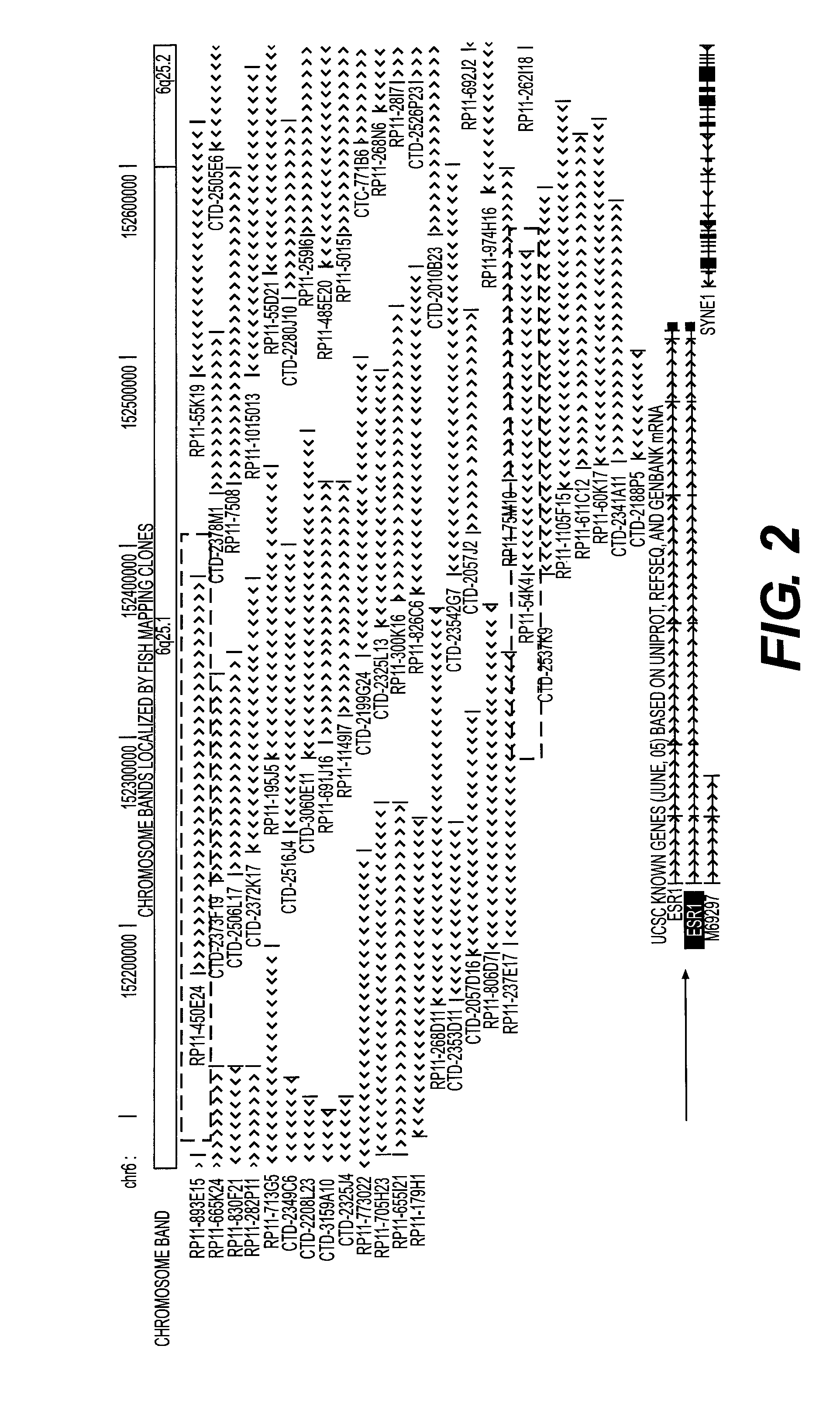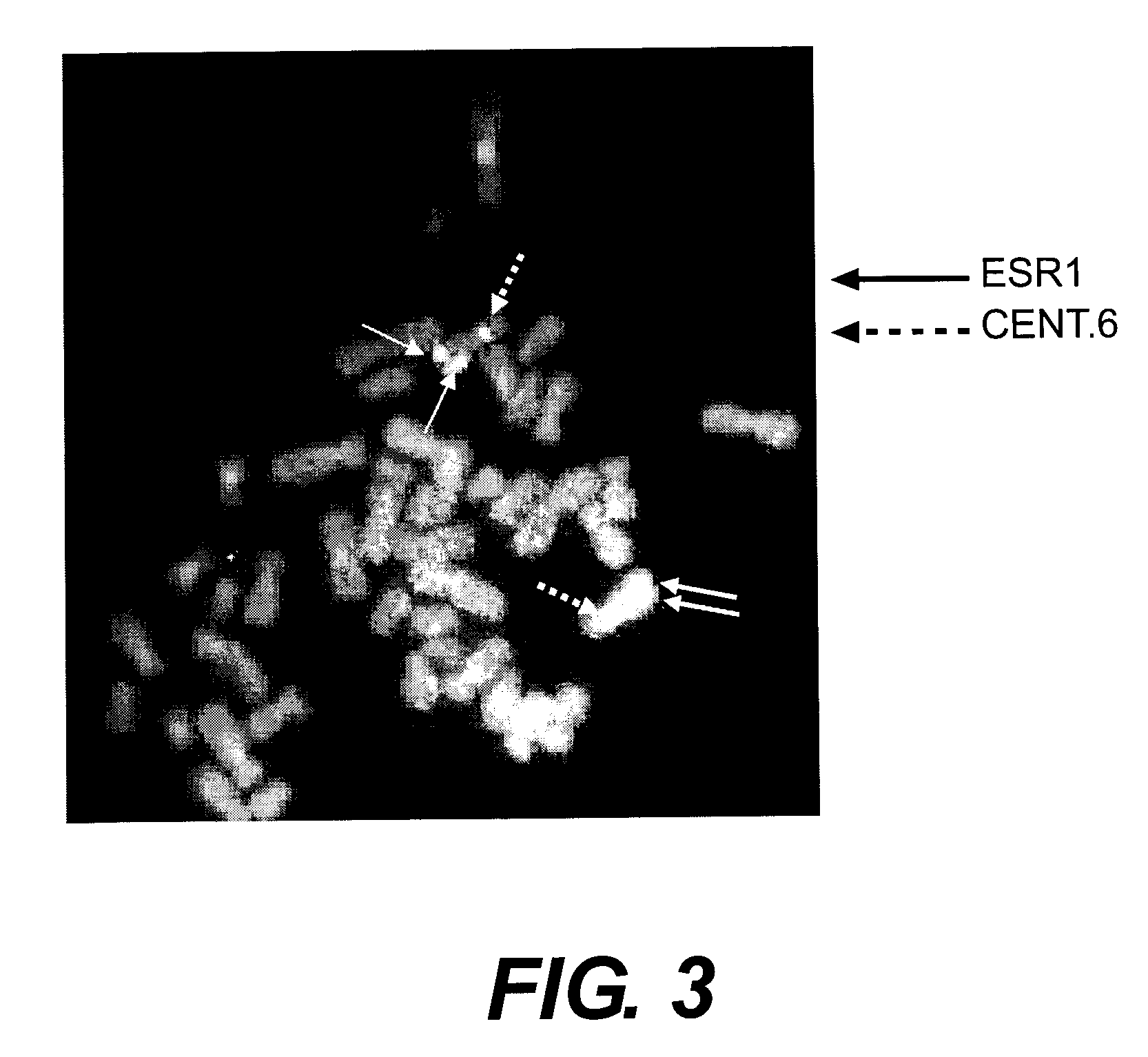Methods for utilizing esr copy number changes in breast cancer treatments and prognoses
a technology of breast cancer and copy number changes, applied in the field of methods for estimating the efficacy of cancer patients' therapeutic treatment, can solve the problems of poor survival, loss of safb expression, and hampered direct measurement of the activity of aromatase inhibitors
- Summary
- Abstract
- Description
- Claims
- Application Information
AI Technical Summary
Benefits of technology
Problems solved by technology
Method used
Image
Examples
example 1
Probes
[0122]FIG. 1 demonstrates the general design of the FISH probe mix for detection of ESR1 gene copy number used in the experiments described in the below examples. The probe is constructed as a mixture of Texas Red and Fluorescein labeled probes in which the red BAC (Bacterial Artificial Chromosome) DNA based probe is specific for the ESR1 gene at 6q25 and the green PNA (Peptide Nucleic Acid) based reference probe is specific for the centromeric region of chromosome 6.
[0123]FIG. 2 demonstrates the positions at chromosome 6q25 of the BAC clones used for construction of the ESR1 probe (marked in rectangles), relative to the position of the genomic ESR1 sequence (marked with an arrow).
[0124]The ESR1 genomic sequence is located on the chromosome 6 q-arm, region 2 band 5 (6q25) where it covers 295.721 bp from position 152.220.800 to 152.516.520. The source of the labeled DNA probe is the two BAC clones RP11-450E24 and RP11-54K4, together covering position 152.175.459 to 152.555.252 ...
example 2
ESR1 Gene Copy Numbers in Non-Malignant Breast Samples
[0137]Patient samples: Samples from 120 patients having surgery to reduce the size of the breasts were collected at Herlev University Hospital. The tissue blocks were collected from the archives of the Department of Pathology, and were investigated with H&E staining to ensure that the tissue was non-cancerous. 6 tissue micro arrays (TMAs) were produced with 2.0 μm cores from each patient. Each TMA contained samples from 20 patents along with 2 control samples.
[0138]FISH analysis: The FISH assays were performed according to Protocols 10 or 11 (below).
[0139]Protocol 10: Cytology FISH: The slides were pre-treated for 2 min in 3.7% formaldehyde (pH 7.6) at room temperature. The slides were washed in 1× Wash Buffer for 2×5 min at room temperature. Afterwards, the target tissue was dehydrated in a cold series of EtOH (70%, 85% and 96%) 2 min each and air-dried. On each target area, 10 μL hybridization mixture (target and reference prob...
example 3
Detection of ESR1 Gene
[0150]The initial experiment which demonstrated the existence of ESR1 deletions was made on nine FFPE mamma carcinoma tissues identified as ER negative by IHC testing. The nine tissues were taken from the Dako tissue bank; there is no further information on the tissue samples. The nine tissues were hybridized with the ESR1 / CEN-6 FISH Probe Mix by use of standard methods and reagents (Dako Histology FISH Accessory Kit K5599).
[0151]The hybridized samples were scored by two technicians, each counting at least 60 red signals, with the results as shown in Table 4:
TABLE 4RatioRatioidentifiedidentifiedTissue IDby DBRby ANA73 / 97 509900.730.66124 / 97 510370.770.9274 / 97 509910.850.7275 / 97 509920.680.5488 / 97 510010.550.77123 / 97 510360.860.9133 / 97 509060.67—34 / 97H 509080.910.9657 / 97 509410.730.79
[0152]When deletions are defined according to the current standard (ratio≦0.8), the two technicians identified 6 and 5, respectively, of the 9 samples as deleted cases with four cas...
PUM
| Property | Measurement | Unit |
|---|---|---|
| Electrical resistance | aaaaa | aaaaa |
| Therapeutic | aaaaa | aaaaa |
Abstract
Description
Claims
Application Information
 Login to View More
Login to View More - R&D
- Intellectual Property
- Life Sciences
- Materials
- Tech Scout
- Unparalleled Data Quality
- Higher Quality Content
- 60% Fewer Hallucinations
Browse by: Latest US Patents, China's latest patents, Technical Efficacy Thesaurus, Application Domain, Technology Topic, Popular Technical Reports.
© 2025 PatSnap. All rights reserved.Legal|Privacy policy|Modern Slavery Act Transparency Statement|Sitemap|About US| Contact US: help@patsnap.com



